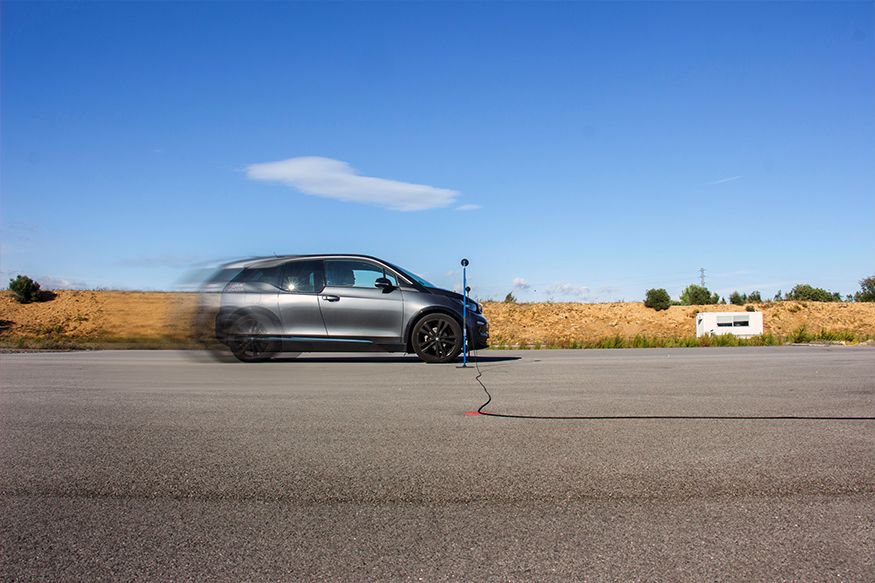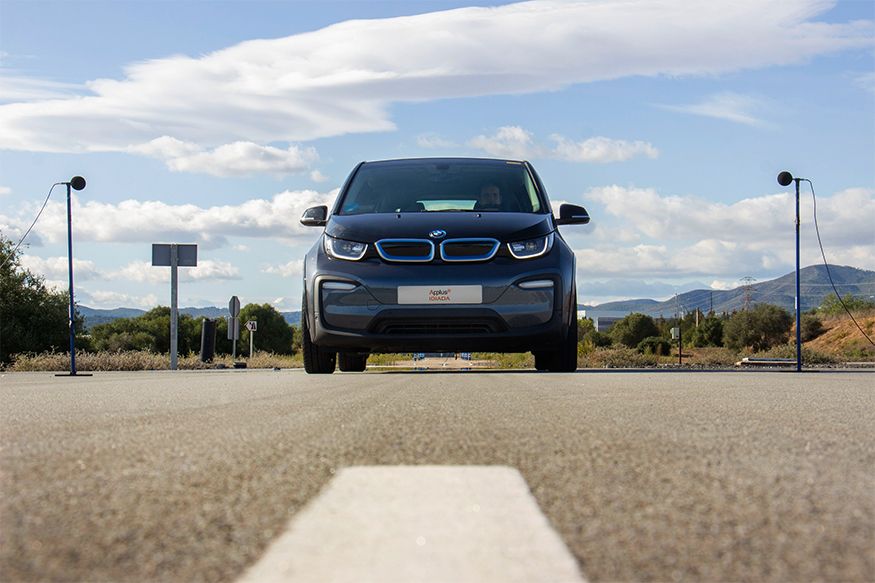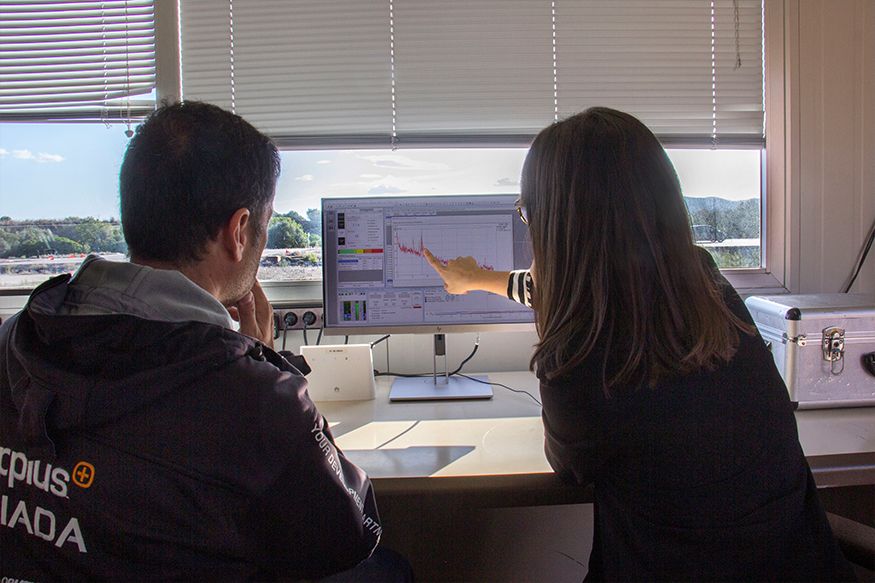At higher speeds, tyre and wind noise conceal the noise of most modern internal combustion engines (ICEs), but these new EVs and HVs rolling down the roads can be very quiet before they’re moving fast enough to generate that wind and tyre noise. It has therefore become necessary to enforce minimum noise requirements to ensure the safety of pedestrians in traffic, so in addition to the current noise level requirements for all vehicles, new standards, specifically for EVs and HVs, have been introduced: Federal Motor Vehicle Safety Standard (FMVSS) 141 and United Nations (UN) Regulation No. 138 (UN 138), and more regional and national standards are in various stages of approval.


A logistical solution to the every-day world
It turns out that these vehicles are so quiet that ambient noise can be an issue when testing. Travelling at 10 km/h vehicles must produce a minimum of 50 dB(A), at 20 km/h, 56 dB(A) and for the reverse test at 6 km/h, the minimum is 40 dB(A). These levels are sufficiently loud to alert nearby pedestrians, but they are not exactly deafening, which can present some problems in testing. Test tracks performing minimum noise testing outdoors may be influenced by external noise from surrounding areas, and this ambient noise can be present around the vehicles’ target levels.
This makes it very difficult for the testers to determine if the vehicle is complying with the standard, or if they are measuring the surrounding environment. While the software has the tools needed to identify the data they need, Irene’s team elected to adopt a simpler solution. They shifted the test times to the early morning hours, negating the need for the additional post-processing.

The needed noise comes from
Along with minimum noise levels, FMVSS 141 includes stipulations for a shift in the amplitude (dependent on changes in velocity) of specified frequencies. Similarly, UN 138 defines minimum noise levels, but requires a shift in the frequency (dependent on changes in velocity) of specified frequencies. And because, of course, quiet vehicles (such as EVs and HVs, when not using their ICE) cannot inherently meet those requirements, they must be equipped with an Acoustic Vehicle Alerting System (AVAS). Vehicles must meet the requirements of FMVSS 141 (the US standard) or UN 138 (the European standard), depending on where they will be sold. IDIADA can test for either standard, and additionally provide design and system development, at the customer’s request.

Inside or out?
Another option their customers can request is indoor pass-by testing. While indoor pass-by testing can provide some advantages, some manufacturers find that they need to increase the volume of their AVAS because their initial evaluations may have included additional vehicle noise source paths, such as tyre noise. IDIADA currently works with a range of vehicles, from cars to buses and trucks, and in particular, in the moving scenario, buses and trucks are more likely to be above the noise limits based purely on the physics of vehicle contributing source paths.
Pass or fail
In the end, the results come down to a pass or fail. Irene’s team tests the vehicles and processes the data. The data provided by the system enables the homologation department to provide an easy go or no-go for sale in Europe/Spain or the US, which – in turn – results in a safer world for the public.

当社ニュースレターを購読すると音とバイブレーションの世界からの最新情報を取得できます。

